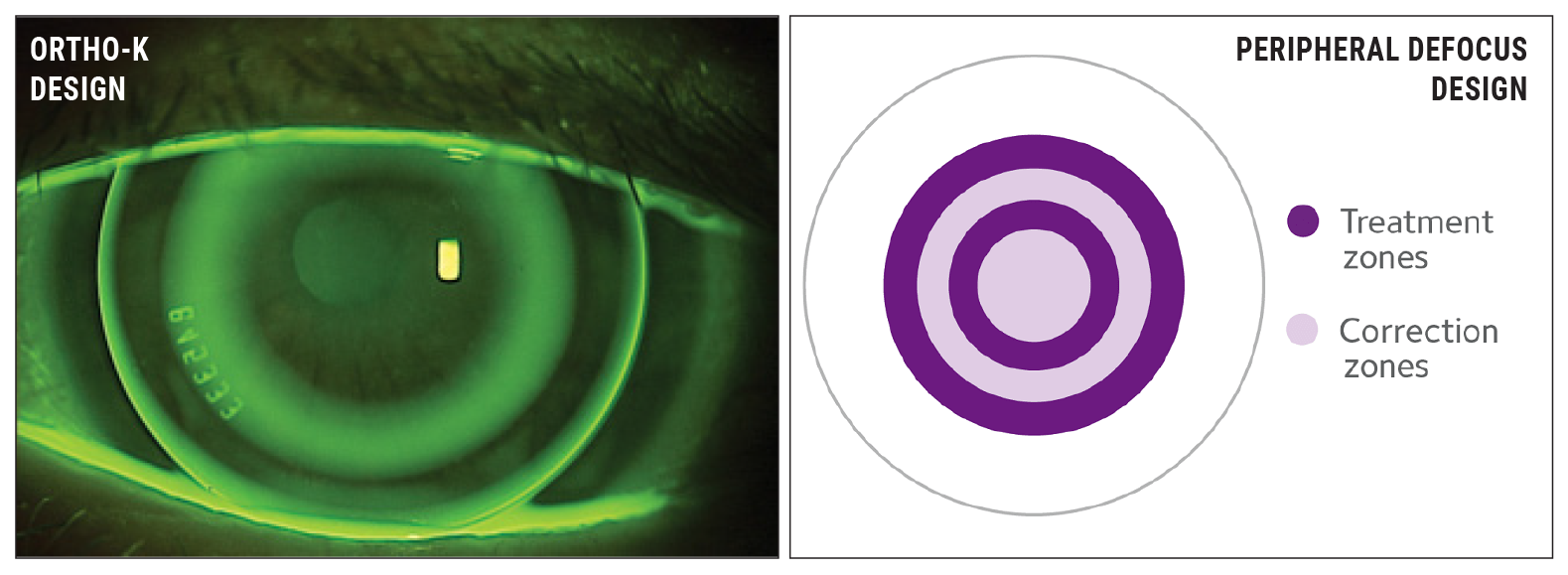 |
| Ortho-K and multifocal lenses in children undergoing treatment match results from clinical trials. Photo: Robert Ensley, OD, and Heidi Miller, OD; CooperVision. Click image to enlarge. |
Randomized controlled trials have demonstrated that overnight orthokeratology (ortho-K), soft multifocal and dual-focus contact lenses effectively slow the progression of myopia in children. Ortho-K and these two types of lenses may induce varying amounts of myopic defocus within the pupil, with differing clinical efficacy in mitigating axial elongation. A recent study evaluated the real-world relative efficacy of ortho-K and these peripheral defocus contact lenses in a clinical population. The team also compared myopia control efficacy to that previously reported in randomized controlled trials of real-world populations of myopia children undergoing typical treatment to gain insight into what utility, if any, clinical data may have in understanding myopia control treatment efficacy. The researchers found no difference in effectiveness between the two myopia control options.
Records from a university practice were reviewed to identify children who were treated with ortho-K or peripheral defocus contact lenses. The analyzed sample contained 273 visits from 77 patients. Annualized rates of axial length (AL) progression were calculated and used as the response variable in both linear mixed-effects and nonlinear regression models. The researchers combined data for peripheral defocus contact lens brands MiSight, Biofinity and Proclear (CooperVision) and SpecialEyes Multifocal and Naturalvue (Visioneering Technologies), plus the ortho-K brands Corneal Reshaping Therapy (Paragon Vision) and Vision Shaping Treatment (Euclid).
On average, children were 10.7 years of age at baseline, and 62% were female. More Asian children wore ortho-K lenses compared with peripheral defocus contacts. At baseline, children had about 3.00D of myopia and 0.75D of astigmatism in both treatment groups. The majority of children in the peripheral defocus contact lens group wore multifocals (78%), as MiSight lenses were not approved in the United States until 2021.
Linear mixed-effects regression models using only baseline covariates showed no evidence that the annualized change in AL differed between treatments, with or without the inclusion of age, race, sex, baseline AL or spherical equivalent refractive error.
Across all possible subsets of models, age at baseline was the best predictor of annualized AL change. There was no statistical difference between parameters of an exponential decay model fitted within treatment using follow-up age as a time-varying predictor, indicating that the rate of annualized change in AL was similar for the two myopia control options.
As myopia control becomes the standard of care, recruitment of study participants previously unexposed to treatment may prove difficult or impractical.
The researchers concluded in their paper, “Continued research of real-world performance is warranted to understand the safety and efficacy of these treatments in the broader population.”
Skidmore KV, Tomiyama ES, Rickert ME, et al. Retrospective review of the effectiveness of orthokeratology vs. soft peripheral defocus contact lenses for myopia management in an academic setting. Ophthalmic Physiol Opt. March 15, 2023. [Epub ahead of print]. |


